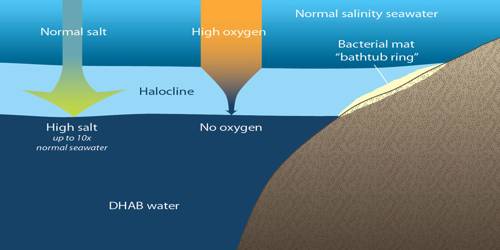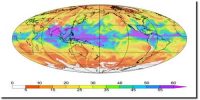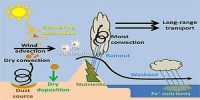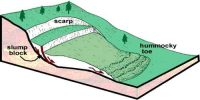Halocline: The distinct zone in the ocean below which the salinity increases sharply. It is a zone in which there are fast, vertical changes in the salinity. In low latitudes the halocline generally represents a decline in salinity with rising depth; in high latitudes, it might signify the reverse. Particularly well-developed haloclines happen in the Atlantic Ocean, in which salinities might decline by numerous parts per thousand from the base of the surface layer to depths of about one kilometer (3,300 feet).
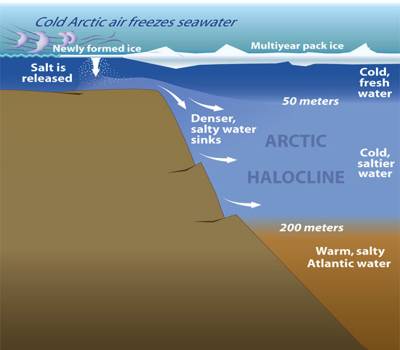
In assured high latitude areas (such as the Arctic Ocean, Bering Sea, and the Southern Ocean) the surface waters are in fact colder than the subterranean waters and it is liable for maintaining water column constancy- separating the surface waters from the subterranean waters. In these areas, the halocline is significant in allowing for the development of sea ice and limiting the escape of carbon dioxide to the atmosphere. Haloclines are also found in fjords and poorly diverse estuaries where fresh water is deposited on the ocean surface.
The halocline is generally sound developed in coastal areas where there is much freshwater input from rivers producing surface waters of little salinity, a region where salinity boosts quickly with depth (the halocline), and a deeper region of more saline, denser waters.
